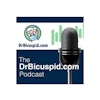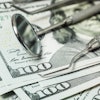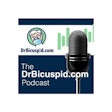
Dentistry has the highest suicide rate of any profession. Or so they say. The perception is so entrenched in the popular culture that it once cropped up in an episode of the TV comedy "Seinfeld."
But researchers from the National Institute for Occupational Safety and Health (NIOSH) are saying it may be a myth. In a recent study, they report that, overall, white male dentists had slightly lower suicide rates than the general working population (Occupational Health, January 2008, Vol. 58:1; pp. 25-29).
So where did the notion get started?
There's no question that dentists struggle with depression. "Dentists are under such horrible pressure," said Dorothea Lack, Ph.D., a San Francisco psychologist who used to work as a dental hygienist. "It's not surprising that they have psychological problems."
In the "Seinfeld" episode, Jerry Seinfeld's Jewish dentist Tim declared, "You have no idea what my people have been through."
"The Jews?" Seinfeld asked.
"No, the dentists," Tim replied.
After Tim states that dentists have the highest suicide rate of any profession, Seinfeld retorted: "Is that why it's so hard to get an appointment?"
The perception may have originated in the 1960s when an Oregon study found that the state's dentists had the highest suicide rate of any professional group. A few other statewide studies showed high rates, too. Washington dentists had the second highest suicide rate in a 1983 analysis (behind sheep herders and wool workers), while California dentists ranked third for suicides in a 1973 inquiry (behind chemists and pharmacists).
Some national studies had similar findings. A 1971 examination of data collected by the U.S. Public Health Service showed that dentists had the third highest suicide rate of 36 occupations (behind managers and police officers). Then, in 1996, Steven Stack, a Wayne State University sociologist, analyzed more recent public health service data, using sophisticated statistical techniques to ensure that the high rate was not due to age, race, gender, or marital status. He concluded that being a dentist increases the risk of suicide by 564%.
Other studies reached completely different conclusions, however, finding that dentists' suicide rates did not differ much from the general working population. Those included a 1985 analysis of North Carolina dentists and at least two national studies in the mid-'70s, one of which was published by the ADA. The ADA even convened a conference on the topic in 1977, with experts declaring that reports of high suicides rates were exaggerated.
Settling the question is not easy. The research is inherently complicated, given that people sometimes won't list suicide as their loved one's cause of death. In addition, not all states collect suicide data by occupation.
The NIOSH researchers wrote that their colleagues have reached conflicting conclusions because they analyzed the data differently. "Only older white male physicians and dentists have elevated suicide rates, which partially explains the varied conclusions in the literature," they wrote.
Overall, they found that dentists older than age 50 had elevated suicide rates. Those between 60 and 64 years, the oldest working dentists studied, had the highest rates: 47.5 of 100,000 dentists committed suicide, compared to 42.6 of 100,000 workers of this age in the general population.
Medical doctors between 60 and 64 years had even higher rates, with 54.8 of 100,000 of these older doctors committing suicide.
But whichever profession is the most stressful, it's clear that many dentists need new ways to cope with the emotional burdens of their jobs.
In part II of this series, we take a look at techniques that psychologists and stressed-out dentists themselves are offering.















